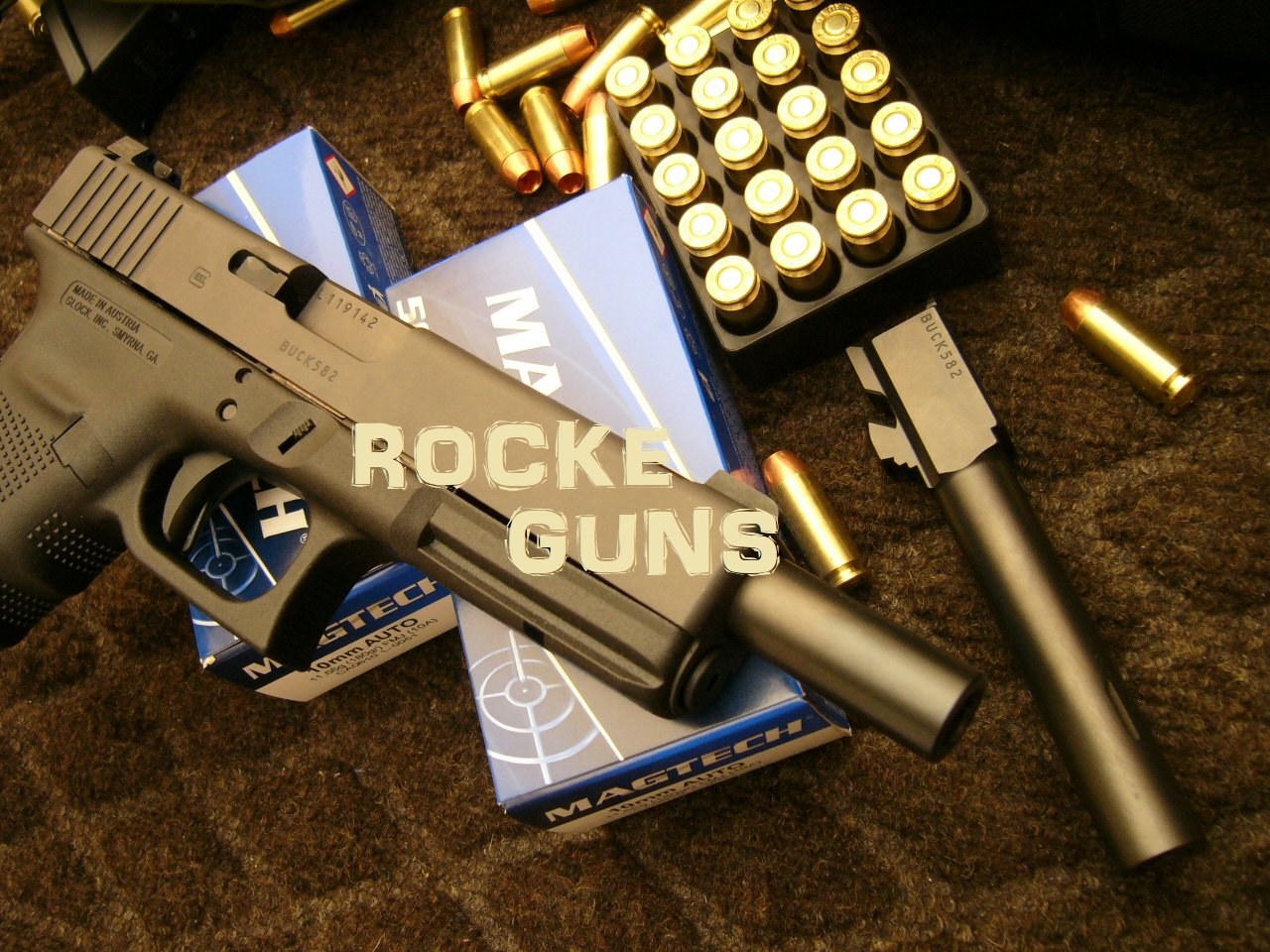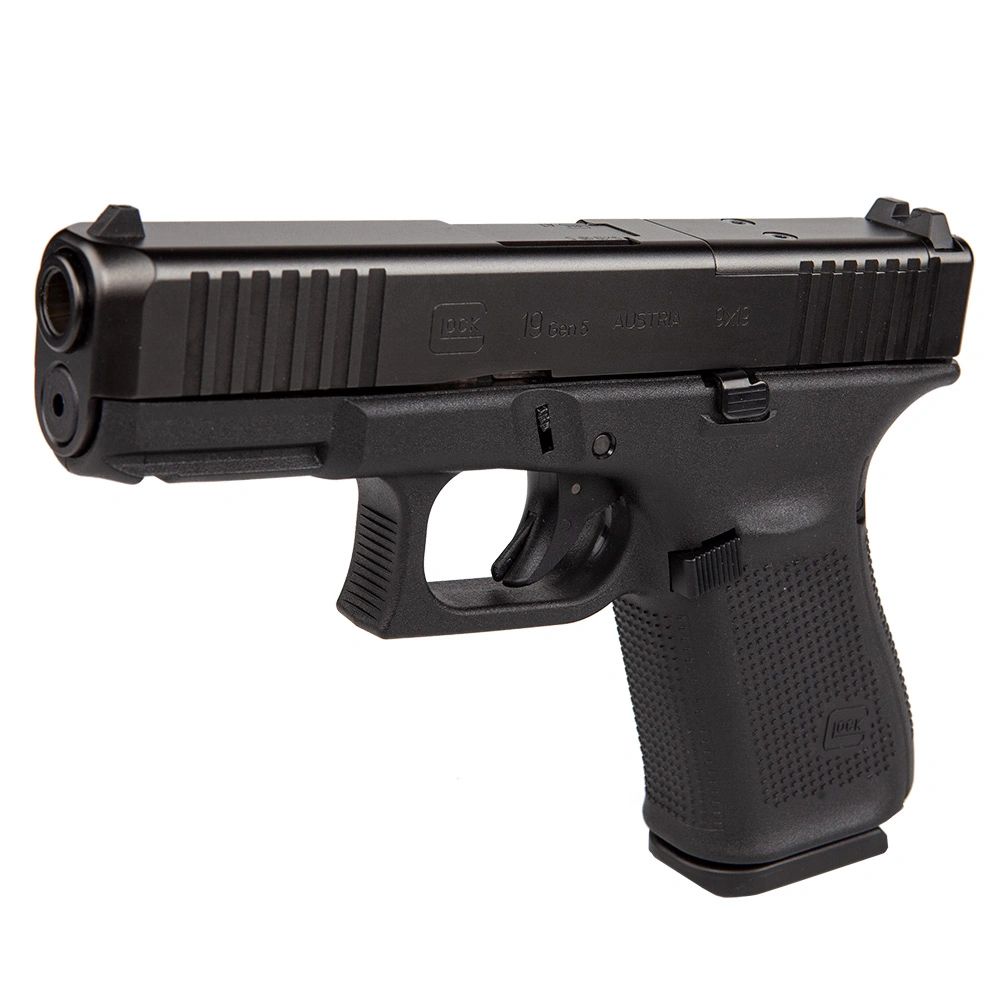Serial Number On Glock - The most common question for new Glock buyers is "What is my Gen IGlock?" Prior to the release of the 4th generation, Glock did not officially recognize model numbers, contributing to the perception that "A Glock is a Glock is a Glock-They're all the same." But early collectors recognized the differences and settled informally on three major multiples, or "generations," by which they would be divided. The nomenclature became so popular that Glock followed suit with the release of the Gen 4 in 2008 and their brochures now highlight the earlier Gens in some places.
The images below will help you clearly identify which generation your Glock belongs to, but be aware that there is a lot of overlap as the models are slightly changed. Also, 3rd gen guns are still being produced due to California handgun restrictions so you have a gen 5 gun that is actually older than your gen 3! The notes on the images identify the main features that are consistent throughout the generation, but slight changes in branding and internal components can be found at different times - and sometimes back and forth - within a Gen. Therefore, strong differences between generations indicate only major frame revisions, many parts change two or more times, but some changes last briefly between generations.
Serial Number On Glock

The first generation was one of constant change. The original design, although reliable, was still under development. One consistent feature is the grippy texture that surrounds the entire grip (no front or back strap testing). It feels smoother compared to later models and has been considered a "pebble texture" by collectors. Early guns had a thin, stainless steel barrel that was introduced earlier (before the AD prefix) and the barrel wall thickness was increased before the AN prefix. There are several variations on the magazine, case, and small internal parts as well. All guns will have Austrian proof marks, but not the same placement or number of marks. Early (pre-US) rifles and those selected for European markets do not have a serial number on the frame. Many early rifles were equipped with sights that were called "Weakend Sights" because of their weakness. Standard (fixed) images are also updated, or the targeted version will receive a premium. All frames had a good crescent relief under the front strap except for the few 19's that were made.
Can That Altered Serial Number On The Firearm Seized From Your Client Still Be Seen With The Naked Eye? If So, Object To That Four Level Enhancement!
The 2nd Gen is what many beginning collectors or even inexperienced dealers will call "Gen 1". The confusion stems from two factors: 1. 1st Gens are very rare and many casual observers may not have seen them before. 2. Many models are introduced in the 2nd Gen line and some consider them "1st Gen" because it is the first release of that particular model. To make things clear, if you have a model 20 or older, you have a Gen 2 Glock even though it is the first version of that gun made. The clear difference between 1 and 2 of the 17-19 models is that checks have been added to the front and rear lines and a change in the texture of the side panels (deeper than the 1st Gen). Gen 2 also saw the introduction of 5 additional carbines and all non-.380/9mm guns were fitted with a second locking pin to prevent frame cracking on hard recoil. It is important to note that the number of pins does NOT indicate generation, as many believe. 9mm frames only have 2 pins from Gen 1 to Gen 3 production while all other calibers will have 3 pins. All full size frames are carried on the magazine for good relief at the bottom of the front strap.
By the late 1990s, Glock had become a dominant force in the American firearms market and other manufacturers tried to copy the design. This led to pressure to "innovate" the Glock design to try to keep up with the backpack. The Gen 3 changes actually started with the release of the subcompact models in 1995. It was felt that the grip would be too small for many to hold so the finger lines were molded into the front strap to try and increase purchase and closure. rotation due to backlash. This began a 3-year transition period until full changes reached all models in 1998. Some large frame transitional models are rare (especially of the portable variety) - see https:///transitional/ for more information. The Gen 3 will have forward strap finger lines, thumb rests on top of the grip and a utility rail molded into the dust cover. As mentioned above, in 9mm calibers ONLY, you will still find 2-pins during the early Gen 3. Frames were simplified to all 3-pins in the early 2000s.
By the time the 4th generation was released, Glock had become familiar with the "pistol" but once again found itself facing opponents with new designs. One of the fashions that caught the attention of consumers was the adjustable back straps to better fit different hand sizes. Glock first tried a smaller grip on the Gen 3 SF models (this was only available in .45 and 10mm calibers). The modular backstrap system delivers SF measurement on all frames with two sizing options and a beavertail adapter. The internals were redesigned from the ground up and were actually built with the recoil profile of the .40S&W in mind and scaled down for 9mm (where Gen 1-3 was designed differently). This should prove to make the .40 models more durable while maintaining the legendary reliability of the 9s. The grip texture has also been changed to a more aggressive pattern on the side panels - this, again, was first attempted during the short run of the latest Gen 3 guns with the so-called "RTF2" texture. RTF2s are technically Gen 3, possibly Gen 3.5 and were only produced (apart from period specials) from 2009 to 2011 - see image at the bottom of this page.
The first Gen 5 models were actually preceded by the release of the new subcompact slim models 42 & 43. These models started as redesigns with all new internal components to fit the smaller sizes and the FBI was involved in those changes. they came out with the big guns and their request for M-types. The 19X, 42, 43, 43X, 44, 45, and 48 models technically do not carry the Gen 5 designations on the slide, but they will never be more compatible with other Gen 5 rifles. The 17 and 19 were officially released like Gen. 5s in 2017 and was followed by other 9mm and .40 S&W offerings but so far no .357 Sig, 10mm or .45 ACP offerings have been released. Major changes of note include a "shooter" barrel, fully ambidextrous controls, flared magwell, and removal of front strap finger holes.
Vickers Glocks Gen 3 G17 & Gen 3 G19 Special Run
There are (at least) two more designs that can be met with a true generation break or are different enough to be difficult to identify in the above discussion: 1. RTF2 third Gens & 2. FBI M series.
RTF2 is short for "rough texture framework, version two." The first version was only made as a prototype and was never released although at least one is on display at the Cody Firearms Museum. The designers came to the second version and a new mold was made to incorporate this grippy texture into the standard 3rd Gen design. All the internal parts are the same, so the only difference will be the grip texture. As you can see in the exploded view, the entire grip is covered in little pyramids—and let me tell you, they're sharp! This gun will really stick to your hand, even when wet. Glock marketed this primarily to the police from 2009 to 2011 but the design is a clear step between the third and fourth generation pistols. The pyramid concept was continued but with larger pyramids as the ones in RTF2 tended to wear out. See https:///rtf2g/ for more images.
Finally, we should also mention the FBI's M-series firearm. The 17M & 19M actually preceded and, perhaps, inspired the Gen 5 rifles. They were built to a specification requested by the FBI as a new service weapon and incorporated some of the design changes from the mini 42/43 models as well as other new ones. ideas These were the first Glocks with ambidextrous controls and modifications to the pistol designed to improve accuracy. Regardless, the M gun will look and feel pretty much the same as the Gen 5—the main difference is the internals so many collectors will consider them part of the Gen 5 family. For the right person, though, that "M" added to the model markup will make a huge difference in the amount they are willing to pay.with it.

Glock serial number lookup, glock 22 serial number, glock serial number decoder, glock serial number, glock serial number list, glock 26 serial number, glock serial number dates, glock 17 serial number, glock 21 serial number, glock serial number search, glock serial number location, glock serial number check
0 Comments